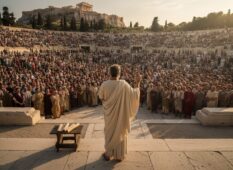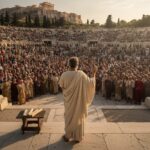The Seven Churches: What Now? – Richard T. Ritenbaugh cgg.org
Internal biblical evidence indicates that the seven churches of Revelation 2-3 represent attitudes and conditions within God’s church throughout history, culminating in the end time. Revelation’s focus on the Day of the Lord (Revelation 1:1, 10) underscores this conclusion. The prevalent attitude of the Laodicean church (Revelation 3:14-22), marked by spiritual indifference, mirrors conditions today as Christ’s return approaches.
As the church undergoes scattering, what hope remains? Scriptures like Matthew 24:1-2 and Isaiah 5:1-15 portray God’s people being reduced in number and influence, paralleling the destruction of Herod’s Temple. Yet, prophecies such as Haggai 2 reveal that God will stir a remnant to rebuild a spiritual Temple, a hopeful sign of revival before Christ’s return.
This remnant, guided by figures like Zerubbabel and Joshua (Zechariah 3-4), types of the Two Witnesses in Revelation 11, will receive divine empowerment to prepare for the end time. These Witnesses, symbolized as olive trees and lampstands, provide spiritual sustenance to the scattered church (Revelation 11:4).
Isaiah 4 and 41 further depict this remnant coming together in a wilderness setting, representing a place of spiritual renewal and protection. Here, God’s people prepare for their role in the Millennium, a foretaste of global restoration under Christ’s reign.
While the remnant flourishes, scattered believers face trials to refine their faith (Zechariah 13:9; Revelation 3:18). Though some endure persecution, God’s purpose is redemption, not abandonment. All who overcome will share in the glory of His Kingdom.
#SevenChurches #EndTimeProphecy #SpiritualRevival #BiblicalInsights
Report Story




